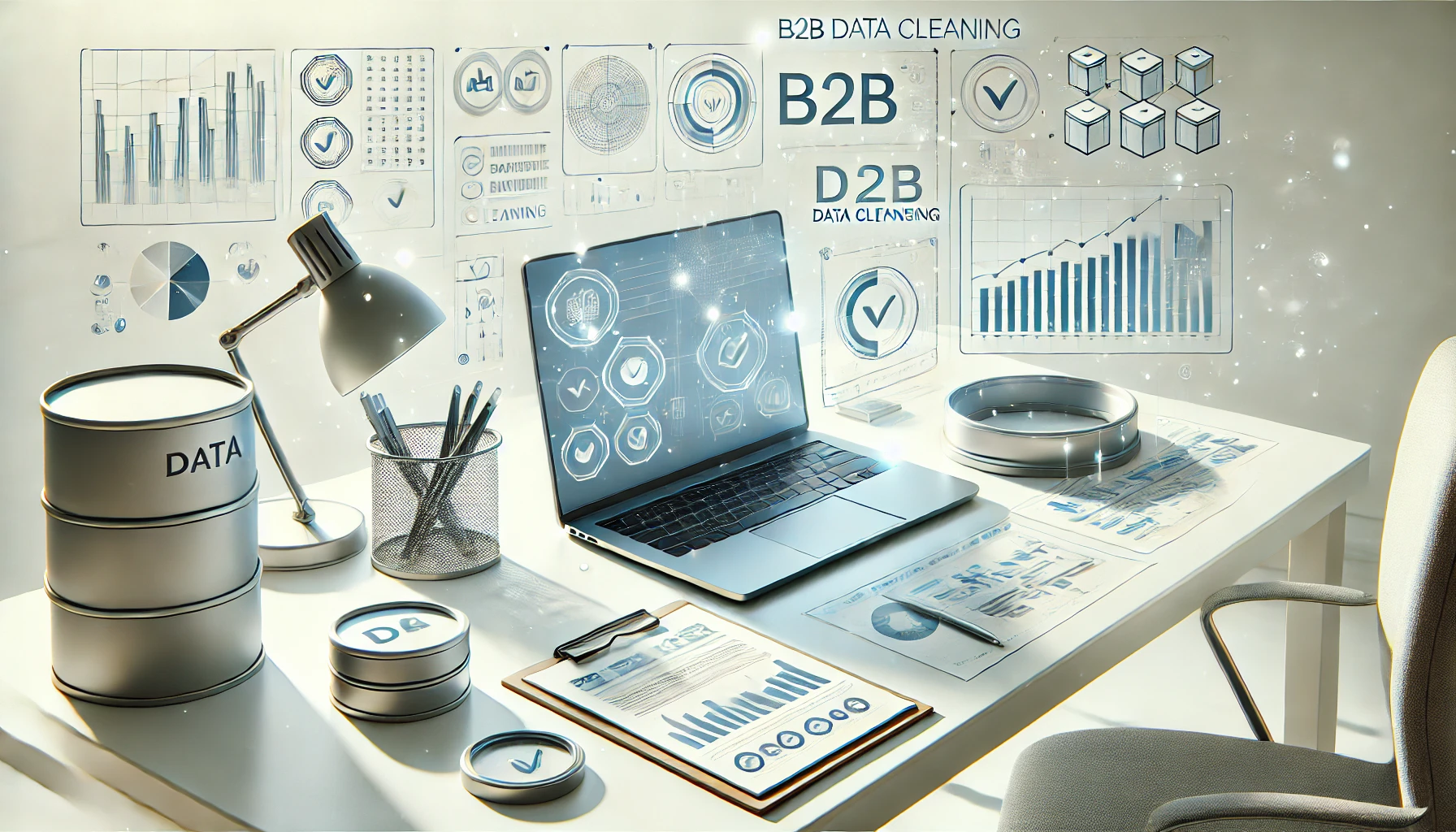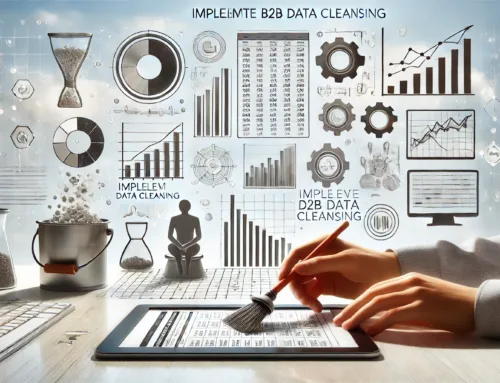When it comes to managing B2B data cleansing, you need to start by understanding the intricacies of your data landscape. Identifying duplicates and inconsistencies is just the tip of the iceberg. By defining a clear scope, planning meticulously, executing with precision, and monitoring diligently, you’ll lay a solid foundation for data integrity. But what really makes this process effective? Well, that’s where the real magic lies. Stay tuned to discover the key strategies that can transform your data cleansing efforts from mundane to magnificent.
Understand Cleansing Needs
To effectively manage B2B data cleansing, the first crucial step is to thoroughly understand your cleansing needs. Identifying duplicates and removing inconsistencies are key aspects of this process. Begin by conducting a comprehensive audit of your existing database. Look for duplicate entries that may have arisen from manual errors, system glitches, or data imports. Utilize advanced matching algorithms to identify these duplicates accurately.
Next, focus on removing inconsistencies within your data. These could include variations in formatting, misspellings, or incomplete information. Standardize your data fields to ensure consistency across the board. Implement data validation rules to prevent future inconsistencies from creeping in.
Define Process Scope
Understanding the intricacies of data cleansing sets the foundation for the upcoming task of defining the process scope. Scope definition is a critical step that involves outlining the boundaries and objectives of your data cleansing initiative. To define the scope effectively, start by conducting thorough data analysis. Analyzing your data will help you identify the quality issues, inconsistencies, and redundancies that need to be addressed. This analysis will also assist in understanding the extent of the cleansing required and the resources needed to execute the process successfully.
When defining the process scope, consider factors such as the specific data fields to be cleansed, the systems involved, and the desired outcome of the cleansing efforts. Clearly delineating the scope will prevent scope creep and ensure that your data cleansing project stays focused and on track. By establishing a well-defined scope through meticulous data analysis, you set the stage for a structured and efficient data cleansing process.
Plan Cleansing Activities
When planning cleansing activities, the key focus lies in creating a structured roadmap that outlines the specific steps and strategies to be implemented throughout the data cleansing process. To begin, it’s crucial to assess the current state of data quality within your B2B database. Understanding the extent of inaccuracies, duplicates, or outdated information is fundamental in devising an effective cleansing strategy.
Next, establish clear objectives for the data cleansing process. Define what success looks like in terms of data accuracy, completeness, and consistency. This will guide your efforts and help measure the impact of cleansing activities.
Consider the tools and resources needed to execute the cleansing plan efficiently. Whether utilizing automated software for duplicate identification or manual reviews for quality checks, having the right tools in place is essential for a successful data cleansing initiative.
Lastly, prioritize tasks based on urgency and impact. Address critical issues affecting business operations first, then gradually move towards enhancing overall data quality. By following a systematic approach and staying focused on data quality improvement, your cleansing strategy will yield significant benefits for your B2B organization.
Execute Data Cleaning
After laying out a structured roadmap and defining your objectives for data cleansing, the next crucial step is to execute the actual data cleaning process. The foundation of this phase lies in ensuring data quality is prioritized throughout. Begin by utilizing automation tools to streamline the cleaning process. These tools can help identify and rectify inaccuracies, inconsistencies, and duplicates within your dataset efficiently.
Automation tools play a key role in enhancing data quality by reducing human error and saving time. They can automatically scan through large volumes of data, flagging anomalies for further review. Through automation, you can standardize formats, validate information, and maintain consistency across your database.
When executing data cleaning, it’s essential to establish a systematic approach that leverages automation tools effectively. Ensure that data quality remains at the forefront of all cleaning activities, ultimately leading to a more accurate and reliable dataset for your B2B operations.
Monitor Data Health
To ensure the ongoing accuracy and reliability of your B2B data, monitoring data health is a critical aspect of your data management strategy. Data accuracy is paramount in making informed business decisions. Regularly monitoring the health of your data involves assessing its quality, completeness, and relevance. One key metric to track is cleansing frequency, which determines how often your data is reviewed and updated to maintain its accuracy.
Develop a monitoring plan that includes regular audits to identify and rectify any discrepancies or inconsistencies in your data. Utilize automated tools to streamline this process and ensure efficiency. By consistently evaluating your data accuracy and cleansing frequency, you can proactively address any issues that may arise, preventing potential errors from impacting your business operations.
Establish clear protocols for data monitoring within your organization, assigning responsibilities to individuals or teams to oversee this task. Regularly review and adjust your monitoring strategy as needed to adapt to changes in your data environment. Monitoring data health is an ongoing process that is essential for maintaining the integrity of your B2B data.
Frequently Asked Questions
How Often Should Data Cleansing Be Performed?
For optimum data accuracy and efficiency, consider data frequency as a key factor. Best practices suggest performing data cleansing regularly, ideally on a quarterly basis, to maintain data quality, identify errors, and enhance decision-making processes.
What Are the Common Challenges Faced During Data Cleansing?
When tackling data cleansing, you’ll face challenges like ensuring data accuracy and maintaining data integrity. It’s crucial to address discrepancies, duplicates, and outdated information to optimize your database for effective decision-making and operations.
Is It Necessary to Involve Third-Party Vendors for Data Cleansing?
When deciding on data cleansing, consider in-house vs. outsourced options. Conduct a thorough cost analysis to determine the most effective solution. Third-party vendors may offer expertise and resources that could streamline the process.
How Can Data Quality Be Maintained Post-Cleansing Activities?
To maintain data quality post-cleansing, scrutinize data accuracy through regular audits and validation checks. Ensure data reliability by establishing clear protocols for data entry and storage. Implement automated tools for ongoing monitoring and address any anomalies promptly.
What Are the Potential Risks of Not Regularly Cleaning B2B Data?
Neglecting to regularly clean B2B data poses significant risks. Data accuracy impacts decision-making, customer relationships, and overall business operations. Non-compliance risks can result in penalties, damaged reputation, and loss of trust. Prioritize data cleansing for sustained success.




